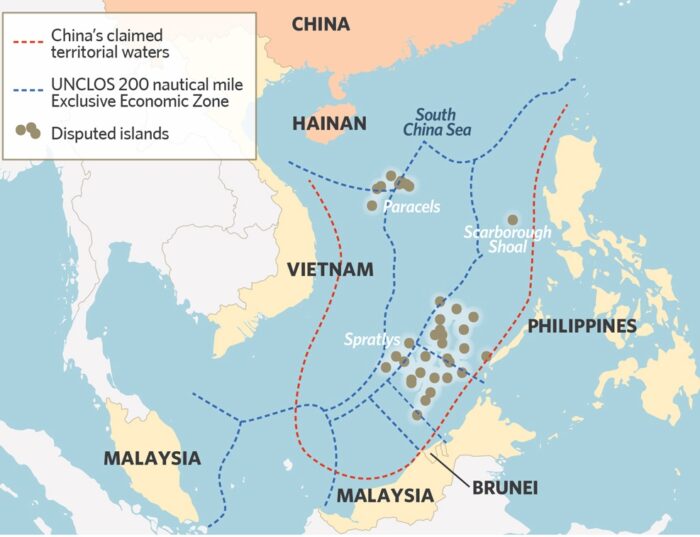China said that the flight by its 16 military aircrafts over the hotly contested waters off Malaysian territory was routine training exercise. Malaysia had accused China of breaching its sovereignty.
The intrusion by 16 military aircrafts of PLA Air force of China into the Malaysian Exclusive Economic Zone had triggered the South Asian nation to scramble its jets. Malaysia said that its efforts to contact the Chinese aircrafts failed, after which it had to scramble its jets. Authorities in Malaysia also stated that the Chinese aircrafts, which included Ilyushin-76 and Xian-Y-20 strategic transporters, were flying between 23000 and 27000 feet. This height range is typically used by commercial aircrafts. The incident had triggered a palpable tension and high-alerts across the South China Sea, which has been engulfed in territorial disputes.
Malaysian foreign minister had criticized the fight as intrusion and said that the government would summon the Chinese ambassador as a measure of registering protest.
Also See: Cyber warfare from China-part-II
A spokesman for the Chinese embassy in Kuala Lumpur has said that the “activities are routine flight training of the Chinese air force and do not target any country.” The spokesman also added, “According to relevant international law, Chinese military aircraft enjoy freedom of overflight in the relevant airspace.”
Malaysia has described the situation of intrusion as serious threat to national sovereignty and flight safety.
China has been pursuing an aggressive expansionist approach over the South China Sea region. This region is pegged to hold trillions of dollars worth of Oil and gas in the oceanic bed.
Also See: Cyber warfare from China-part-I
U.S. Energy Information Agency estimates that the region holds about 190 trillion cubic feet of natural gas and 11 billion barrels of oil in proved and probable reserves. Most of the reserves lie along the margins of the South China Sea rather than under disputed islets and reefs.
In 2012, U.S. Geological Survey estimated that there could be another 160 trillion cubic feet of natural gas and 12 billion barrels of oil undiscovered in the South China Sea. But, Beijing’s estimates for hydrocarbon resources under the sea are considerably higher. The red dragon’s estimate is still modest in relation to China’s overall growing energy demand. China’s oil consumption is also on the rising trend, especially when it has registered a growth of more than 18% after the pandemic struck. The country continues to claim the area known as the nine-dash line, and has operationally backed its claim through aggressive patrols, island-building and setting up military installations.
Also Read: Russia-China Relations- Shanghai Cooperation Organization-implications for India in current times
Annually, USD 3 trillion worth of ship-borne trade passes through the region of South China Sea. Hence, some observers also call it the second Middle East.
Apart from China, Malaysia, Philippines, Vietnam, Brunie, Taiwan have claims over various islands in the region.





